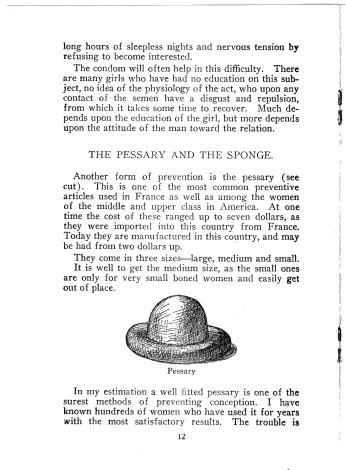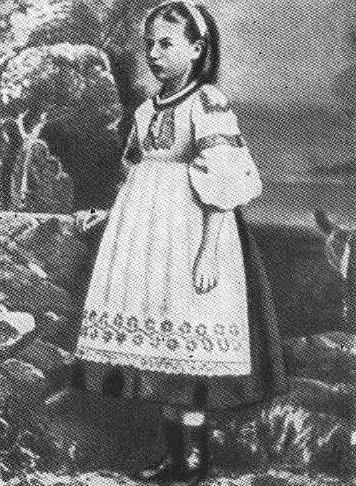|
To The Finland Station
''To the Finland Station: A Study in the Writing and Acting of History'' (1940) is a book by American critic and historian Edmund Wilson. The work presents the history of revolutionary thought and the birth of socialism, from the French Revolution through the collaboration of Marx and Engels to the arrival of Lenin at the Finlyandsky Rail Terminal in St. Petersburg in 1917. Form and content Wilson "had the present book in mind for six years". The book is divided into three sections. The first spends five of eight chapters on Michelet and then discusses the "Decline of Revolutionary Tradition," referencing Ernest Renan, Hippolyte Taine, and Anatole France. The second deals with Socialism and Communism in sixteen chapters. The first four chapters discuss the "Origins of Socialism" vis-à-vis Babeuf, Saint-Simon, Fourier and Robert Owen, and Enfantin as well as the "American Socialists" Margaret Sanger and Horace Greeley. The second group of twelve chapters deal most ... [...More Info...] [...Related Items...] OR: [Wikipedia] [Google] [Baidu] |
Margaret Sanger
Margaret Higgins Sanger (born Margaret Louise Higgins; September 14, 1879September 6, 1966), also known as Margaret Sanger Slee, was an American birth control activist, sex educator, writer, and nurse. Sanger popularized the term "birth control", opened the first birth control clinic in the United States, and established organizations that evolved into the Planned Parenthood Federation of America. Sanger used her writings and speeches primarily to promote her way of thinking. She was prosecuted for her book ''Family Limitation'' under the Comstock Act in 1914. She feared the consequences of her writings, so she fled to Britain until public opinion had quieted. Sanger's efforts contributed to several judicial cases that helped legalize contraception in the United States. Due to her connection with Planned Parenthood, Sanger is frequently criticized by opponents of abortion. However, Sanger drew a sharp distinction between birth control and abortion and was opposed to abortions ... [...More Info...] [...Related Items...] OR: [Wikipedia] [Google] [Baidu] |
Charles Bradlaugh
Charles Bradlaugh (; 26 September 1833 – 30 January 1891) was an English political activist and atheist. He founded the National Secular Society in 1866, 15 years after George Holyoake had coined the term "secularism" in 1851. In 1880, Bradlaugh was elected as the Liberal MP for Northampton. His attempt to affirm as an atheist ultimately led to his temporary imprisonment, fines for voting in the House of Commons illegally, and a number of by-elections at which Bradlaugh regained his seat on each occasion. He was finally allowed to take an oath in 1886. Eventually, a parliamentary bill which he proposed became law in 1888, which allowed members of both Houses of Parliament to affirm, if they so wished, when being sworn in. The new law resolved the issue for witnesses in civil and criminal court cases. Early life Born in Hoxton (an area in the East End of London), Bradlaugh was the son of a solicitor's clerk. He left school at the age of eleven and then worked as an office ... [...More Info...] [...Related Items...] OR: [Wikipedia] [Google] [Baidu] |
Annie Besant
Annie Besant ( Wood; 1 October 1847 – 20 September 1933) was a British socialist, theosophist, freemason, women's rights activist, educationist, writer, orator, political party member and philanthropist. Regarded as a champion of human freedom, she was an ardent supporter of both Irish and Indian self-rule. She was also a prolific author with over three hundred books and pamphlets to her credit. As an educationist, her contributions included being one of the founders of the Banaras Hindu University. For fifteen years, Besant was a public proponent in England of atheism and scientific materialism. Besant's goal was to provide employment, better living conditions, and proper education for the poor. Besant then became a prominent speaker for the National Secular Society (NSS), as well as a writer, and a close friend of Charles Bradlaugh. In 1877 they were prosecuted for publishing a book by birth control campaigner Charles Knowlton. The scandal made them famous, and Bradl ... [...More Info...] [...Related Items...] OR: [Wikipedia] [Google] [Baidu] |
Nadezhda Krupskaya
Nadezhda Konstantinovna Krupskaya ( rus, links=no, Надежда Константиновна Крупская, p=nɐˈdʲeʐdə kənstɐnˈtʲinəvnə ˈkrupskəjə; 27 February 1939) was a Russian revolutionary and the wife of Vladimir Lenin. Krupskaya was born in Saint Petersburg to an aristocratic family that had descended into poverty, and she developed strong views about improving the lives of the poor. She embraced Marxism and met Lenin at a Marxist discussion group in 1894. Both were arrested in 1896 for revolutionary activities and after Lenin was exiled to Siberia, Krupskaya was allowed to join him in 1898 on the condition that they marry. The two settled in Munich and then London after their exile, before briefly returning to Russia to take part in the failed Revolution of 1905. Following the 1917 Revolution, Krupskaya was at the forefront of the political scene, becoming a member of the Communist Party's Central Committee in 1924. From 1922 to 1925, she was alig ... [...More Info...] [...Related Items...] OR: [Wikipedia] [Google] [Baidu] |
Eleanor Marx
Jenny Julia Eleanor Marx (16 January 1855 – 31 March 1898), sometimes called Eleanor Aveling and known to her family as Tussy, was the English-born youngest daughter of Karl Marx. She was herself a socialist activist who sometimes worked as a literary translator. In March 1898, after discovering that her partner Edward Aveling had secretly married the previous year, she poisoned herself at the age of 43. Biography Early years Eleanor Marx was born in London on 16 January 1855, the sixth child and fourth daughterBrodie, FranEleanor Marxin ''Workers' Liberty''. Retrieved 23 April 2007. of Karl Marx and his wife Jenny von Westphalen. She was called "Tussy" by her family from a young age. She showed an early interest in politics, even writing to political figures during her childhood.Marx Family in '' |
The History Of The Russian Revolution
''History of the Russian Revolution'' is a two-volume book by Leon Trotsky on the Russian Revolution of 1917. The first volume is dedicated to the political history of the February Revolution and the October Revolution, to explain the relations between these two events. The book was initially published in Germany in 1930. The original language is Russian, but it was translated into English by Max Eastman in 1932; in the English translation the second volume, originally consisting of two parts, is split into two volumes. The book was considered anti-stalinist in the Soviet Union and only made it to publication in Russia as late as in 1997. Concept and creation The Russian Revolution of 1917 was a major event in history that changed the world. It was the first time in history that the toiled masses had successfully established their own rule. After the revolution the Union of Soviet Socialist Republics (USSR) was born, which further eliminated poverty, established free medicine a ... [...More Info...] [...Related Items...] OR: [Wikipedia] [Google] [Baidu] |
My Life (Leon Trotsky Autobiography)
''My Life: An Attempt at an Autobiography'' (Russian: ''Моя Жизнь'') is the name of the Russian revolutionary Communist leader Leon Trotsky's autobiography. The book was first published in 1930 and was written in the first year of Trotsky's exile in Turkey. It covers the time from his youth, through the Revolution of 1905, the Revolution of 1917, the Russian Civil War up to his struggle against Stalinism and eventual expulsion from the Communist Party. The Russian/Soviet historian Dmitri Volkogonov claims that Trotsky's "''My Life'', must hold pride of place as a work of remarkable self-analysis, as well as imaginative history. Although he wrote it at the relatively early age of forty-eight, soon after his deportation, his life up to then had been eventful enough to merit recording." Before he settled with the simple title ''My Life'', Trotsky tried out several titles:Dmitri Volkogonov "Trotsky: The Eternal Revolutionary", page 312. *''Half A Century (1879 - 1929) ... [...More Info...] [...Related Items...] OR: [Wikipedia] [Google] [Baidu] |
Literature And Revolution
''Literature and Revolution'' (russian: Литература и революция) is a classic work of literary criticism from the Marxist standpoint written by Leon Trotsky in 1924. By discussing the various literary trends that were around in Russia between the revolutions of 1905 and 1917 Trotsky analyzed the concrete forces in society, both progressive as well as reactionary, that helped shape the consciousness of writers at the time. In the book, Trotsky also argued that since the dawn of civilization art had always borne the stamp of the ruling class and was primarily a vehicle that expressed its tastes and its sensibilities. Nonetheless, he went on to argue against the seemingly obvious conclusion that after a proletarian revolution the proletariat as a ruling class should, therefore, strive to create its own proletarian art as many at the time thought. To illustrate this he points out that the bourgeoisie as a class had time and resources to form its own culture way b ... [...More Info...] [...Related Items...] OR: [Wikipedia] [Google] [Baidu] |
What Is To Be Done?
''What Is to Be Done? Burning Questions of Our Movement'' is a political pamphlet written by Russian revolutionary Vladimir Lenin (credited as N. Lenin) in 1901 and published in 1902. Lenin said that the article represented "a skeleton plan to be developed in greater detail in a pamphlet now in preparation for print." Its title is taken from the 1863 novel of the same name by the Russian revolutionary Nikolai Chernyshevsky. In ''What Is to Be Done?'', Lenin argues that the working class will not spontaneously become political simply by fighting economic battles with employers over wages, working hours, and the like. To educate the working class on Marxism, Lenin insists that Marxists should form a political party, or vanguard, of dedicated revolutionaries in order to spread Marxist political ideas among the workers. The pamphlet, in part, precipitated the split of the Russian Social Democratic Labor Party between Lenin's Bolsheviks and the Mensheviks. Main points Lenin ... [...More Info...] [...Related Items...] OR: [Wikipedia] [Google] [Baidu] |
Trotsky
Lev Davidovich Bronstein. ( – 21 August 1940), better known as Leon Trotsky; uk, link= no, Лев Давидович Троцький; also transliterated ''Lyev'', ''Trotski'', ''Trotskij'', ''Trockij'' and ''Trotzky''. (), was a Russian Marxist revolutionary, political theorist and politician. Ideologically a Marxist, his developments to the ideology are called Trotskyism. Born to a wealthy Jewish family in Yanovka (now Bereslavka, Ukraine), Trotsky embraced Marxism after moving to Mykolaiv in 1896. In 1898, he was arrested for revolutionary activities and subsequently exiled to Siberia. He escaped from Siberia in 1902 and moved to London, where he befriended Vladimir Lenin. In 1903, he sided with Julius Martov's Mensheviks against Lenin's Bolsheviks during the Russian Social Democratic Labour Party's initial organisational split. Trotsky helped organize the failed Russian Revolution of 1905, after which he was again arrested and exiled to Siberia. He once again escaped, ... [...More Info...] [...Related Items...] OR: [Wikipedia] [Google] [Baidu] |
Lenin
Vladimir Ilyich Ulyanov. ( 1870 – 21 January 1924), better known as Vladimir Lenin,. was a Russian revolutionary, politician, and political theorist. He served as the first and founding head of government of Soviet Russia from 1917 to 1924 and of the Soviet Union from 1922 to 1924. Under his administration, Russia, and later the Soviet Union, became a one-party socialist state governed by the Communist Party. Ideologically a Marxist, his developments to the ideology are called Leninism. Born to an upper-middle-class family in Simbirsk, Lenin embraced revolutionary socialist politics following his brother's 1887 execution. Expelled from Kazan Imperial University for participating in protests against the Russian Empire's Tsarist government, he devoted the following years to a law degree. He moved to Saint Petersburg in 1893 and became a senior Marxist activist. In 1897, he was arrested for sedition and exiled to Shushenskoye in Siberia for three years, where he ... [...More Info...] [...Related Items...] OR: [Wikipedia] [Google] [Baidu] |







